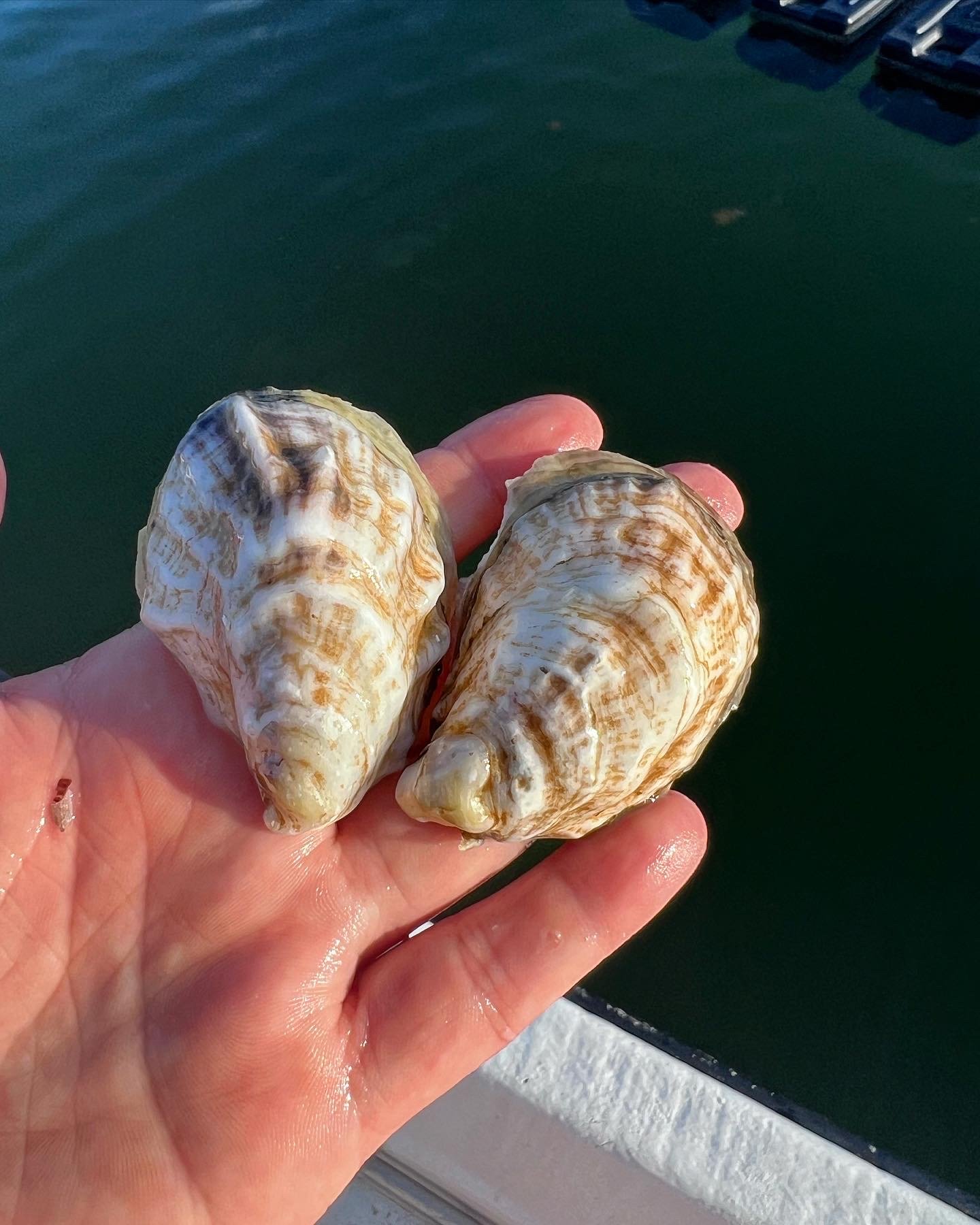Steamboat Wharf Oysters
August 20, 2024

Thomas Hyde never intended to become an oyster farmer. He grew up in the Northern Neck and harvested oysters in high school for fun, for gas money. But when he and his wife, Callie Robinson Hyde, a fellow Virginian, relocated to Hyde’s mom’s farm during the pandemic, oysters became his livelihood.
Hyde’s father had left him an oyster lease when he passed away. He and Callie decided to scatter some oyster seed and see what came of it. There wasn’t much else to do during those quiet months. The oysters needed at least a year-and-a-half to grow into a market-ready size, but the duo figured they would eventually supply some passive income and require little effort.
Things quickly accelerated: With a number of oyster farmers going out of business, the couple was able to buy used gear at an affordable price. The oysters grew, and they realized they needed dozens of cages to support them. The Hydes found themselves spending a lot of time on the water, and they began selling the oysters at farmers’ markets and direct-to-consumer in 2021. Steamboat Wharf Oyster Co. was born. The local oyster farm produces meaty, not-too-salty oysters—and is helping to clean up our waterways, too.
Since then, the duo have adapted their practices. Instead of labor-intensive bottom cages that leave the oysters muddy and needing to be hauled up and power-washed (algae and barnacles like to build their homes on them), the small team shifted to a newer technology. Steamboat Wharf is one of the only regional oyster farms to rely on FlipFarm’s semi-automated growing system. Oysters are cultivated on the surface of the open water, where they get tossed around, forcing the shells to become super strong and the oyster itself to grow meatier. “It’s constantly in the gym,” Hyde explains. “Not a lot of oyster farms have that style of growth. That’s what sets us apart.”
The result: Steamboat Wharf’s Top Shelf cocktail oysters, a plump, medium salinity varietal with a cream shell and a deep cup. “It’s a very typical Rappahannock oyster—a little sweeter, a little meatier,” Hyde says. The company has the capacity to grow up to 1.5 million oysters; between April and early August of this year, they planted more than a million.
The Tides Inn has between 500 and 1,000 Top Shelf oysters delivered each week. Our favorite way to serve them: raw, topped with a seaweed salad and sesame seeds and paired with cocktail sauce and a mignonette for a choose-your-own-adventure at Salt & Meadow.
Though Steamboat Wharf operates in a different part of the bay, our resort also offers opportunities to learn more about oysters and their importance to the local ecosystem. Resort guests take advantage of two immersive oyster experiences, including our signature Chesapeake Gold outing, and self-exploration along our living shoreline.
The Tides Inn also contributes to the environmental work Steamboat Wharf, Friends of Rappahannock and others are doing with help from the oysters. The resort recycles used oyster shells, which are then put back into the water, providing a home for wild oysters and other animals, including blue crabs, eels, minnows and shrimp. The process is helping to correct the loss of shell stock caused by over foresting in the early 1900s, Hyde says. “The development that happened throughout the Chesapeake Bay watershed caused so much erosion, and all that sediment and runoff suffocated 90 to 95 percent of the native oyster population,” he explains. “We’re trying to regenerate that shell stock and that reef area in order to rebuild not only habitat but also the lungs of the bay.” A single oyster can filter 10 to 50 gallons of water per day.
Oysters aren’t only a delicious treat, but they’re also vital ingredients in building a healthy environment for area flora, fauna and all of our (human) guests.
